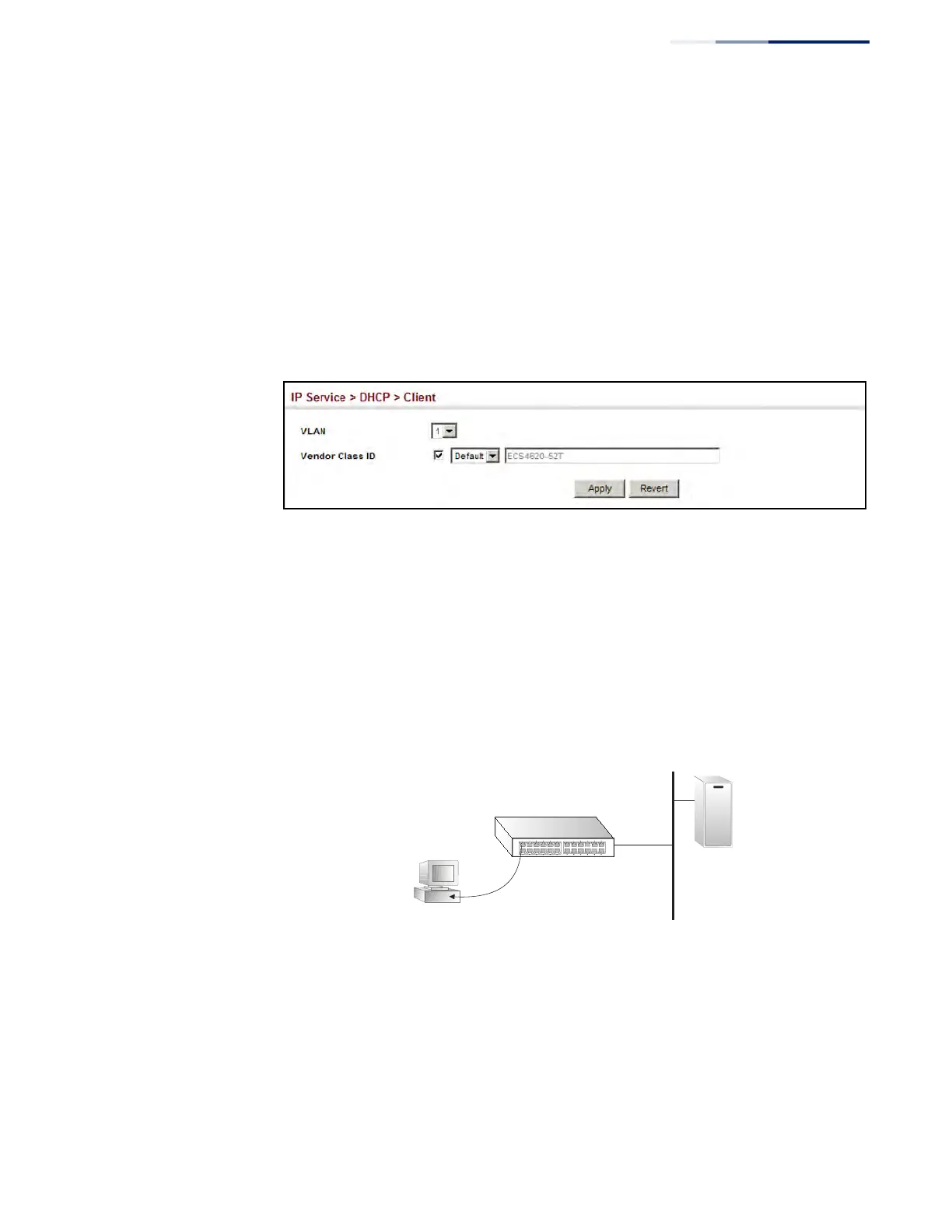Chapter 16
| IP Services
Dynamic Host Configuration Protocol
– 651 –
Web Interface
To configure a DHCP client identifier:
1. Click IP Service, DHCP, Client.
2. Mark the check box to enable this feature. Select the default setting, or the
format for a vendor class identifier. If a non-default value is used, enter a text
string or hexadecimal value.
3. Click Apply.
Figure 421: Specifying A DHCP Client Identifier
Configuring DHCP
Relay Service
Use the IP Service > DHCP > Relay page to configure DHCP relay service for
attached host devices. If DHCP relay is enabled, and this switch sees a DHCP request
broadcast, it inserts its own IP address into the request so that the DHCP server will
know the subnet where the client is located. Then, the switch forwards the packet
to the DHCP server. When the server receives the DHCP request, it allocates a free IP
address for the DHCP client from its defined scope for the DHCP client’s subnet, and
sends a DHCP response back to the DHCP relay agent (i.e., this switch). This switch
then passes the DHCP response received from the server to the client.
Figure 422: Layer 3 DHCP Relay Service
Command Usage
◆ You must specify the IP address for at least one active DHCP server. Otherwise,
the switch’s DHCP relay agent will not be able to forward client requests to a
DHCP server. Up to five DHCP servers can be specified in order of preference.
◆ DHCP relay configuration will be disabled if an active DHCP server is detected
on the same network segment.
Provides IP address
compatible with switch
segment to which client
is attached
DHCP
Server

